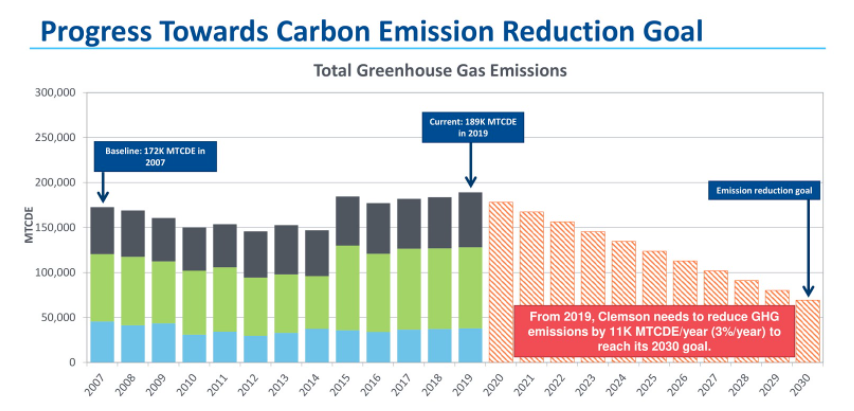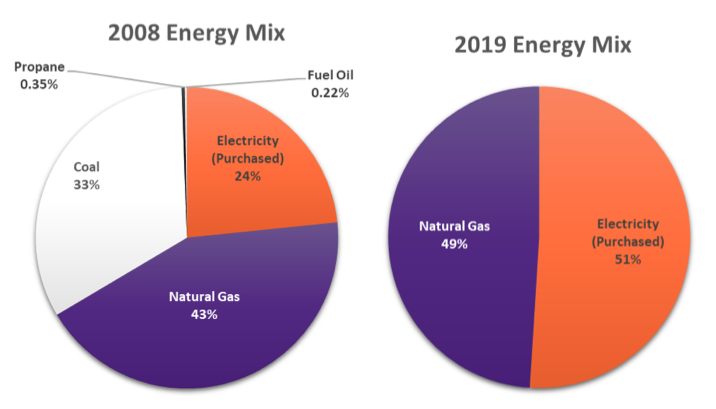Net-Zero Goal
The ultimate goal of the Sustainability Action Plan and the Clemson University Commission on Sustainability is to make the University carbon neutral by the year 2030. Described as the Net-Zero goal, becoming carbon neutral means achieving zero net carbon emissions by balancing carbon dioxide released with an equivalent amount of renewable energy. This can also be achieved through offsetting emissions by things like planting trees that, in turn, could help prevent future greenhouse gas emissions. This ambitious goal will require multiple large-scale projects and can be accomplished through initiatives in six major areas:
- Carbon-free energy sources
- Energy system efficiency
- Green Tiger One
- Conservation/resource management/waste elimination
- Transportation energy efficiency
- Carbon offsets
Within these areas, carbon neutrality will require a series of more than 20 major initiatives, each with multiple sub-activities. These include changes to major infrastructure, building systems, commute behavior, forest management and many others.
The plan is aggressive. It shows how the University would eliminate or offset almost 190,000 tons of yearly carbon emissions in one generation while allowing for growth and change of the institution. Achieving neutrality will be an exercise in university and individual action. We must increase building efficiency, reduce energy use and increase our investment in renewable energy!
As the startling figure from 2019 below shows, Clemson needs to cut 3% of our current emissions a year to get to a place that could be offset with ETC’s. Fortunately, we have already begun the process, and have kept emissions steady despite a significant increase in square footage and student enrollment. More information about Clemson’s carbon footprint can be found in Clemson’s FY2019 Sustainability Solutions Presentation.

To put into perspective, one metric ton of carbon dioxide is equivalent to:
- Driving 2,475 miles in a car
- Heating 0.26 homes for a year
- Powering a 60 watt compact fluorescent light bulb continuously for 4,900 days
Progress
Clemson has made great progress toward reaching the Net-Zero goal. The University began replacing coal with natural gas in 2000 and eliminated burning coal for campus heating in 2011, which previously accounted for 6% of our energy use and has now greatly reduced carbon emissions. The University’s construction of a new natural gas plant will likely cut emissions on campus significantly.
Two checkpoints that relate to our goal of carbon neutrality are a 20% reduction in energy intensity by 2020 (which was achieved) and a 10% increase in renewable energy sourcing by 2025. By reducing our reliance on fossil fuels and working to limit our energy needs, Clemson has the capacity to achieve carbon neutrality and be a leader in climate action. Check out the Energy page to learn more!
The current energy mix of the University compared to the 2008 equivalent is represented by the graphic below.


